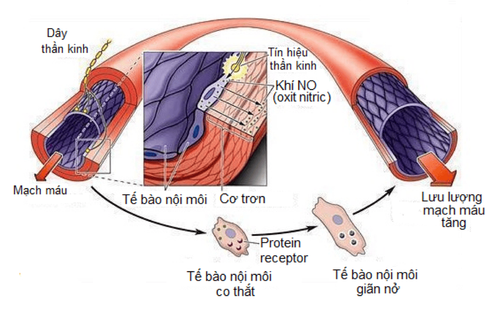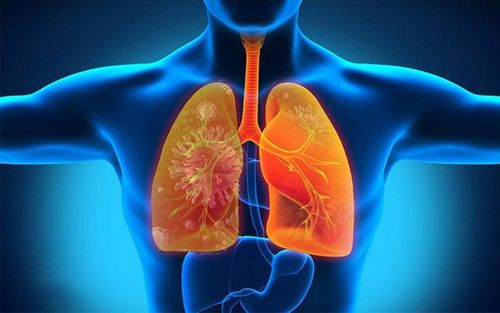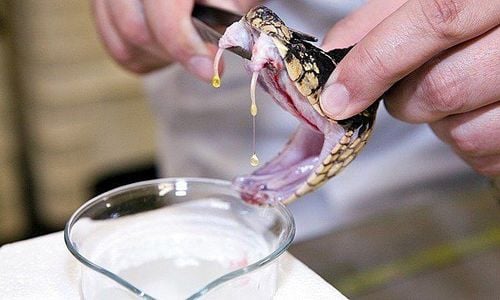This is an automatically translated article.
Hypersensitivity pneumonia is common in people who work in farming and livestock farms or who use air conditioners that are not regularly cleaned and cleaned. Because of the similar symptoms, hypersensitivity pneumonitis can be easily confused with other respiratory infections.
1. What is hypersensitivity pneumonitis?
Hypersensitivity pneumonia (also known as exogenous allergic alveolitis) is an inflammatory reaction that occurs in the alveolar and bronchial walls, when inhaling organic dusts and allergens. The clinical manifestations of the disease depend on the concentration of the inhaled pathogen and the frequency of exposure. The lesions that can cause include: granulomatous interstitial cellulitis, organizing pneumonia, terminal bronchiolitis.
The most common time to appear disease is winter and early spring. Illness is more common in people who work in jobs that are in direct contact with allergens and breathe them into the lungs:
Farm workers can develop hypersensitivity pneumonitis from frequent inhalation of molds straw, mold or dust from bagasse,... Hypersensitivity pneumonia occurs in breeders when: feathers and wastes of species such as pigeons, parrots, chickens, etc., when dry, will disperse. become dust, the farmer breathes it in or when the farmer breathes in the faeces of birds and poultry when cleaning the cage. People who use the air conditioner for many days are not allowed to clean, inhale mold from inside the machine. Other cases such as: inhalation of wood dust in carpenters, moldy cheese causing disease for cheese makers, cattle hair causing disease for tanners,... Due to differences in intensity and duration of exposure With pathogens, the frequency of hypersensitivity pneumonitis varies among populations around the world. According to the results from some studies, the rate of pigeon owners with the disease is 8-30%, the rate of gardeners with the disease is 1-5%.

Người nuôi chim bồ câu có tỷ lệ mắc viêm phổi tăng cảm lên tới 30%
2. Symptoms of hypersensitivity pneumonia
Hypersensitive pneumonia is divided into acute hypersensitivity pneumonitis and chronic hypersensitivity pneumonitis. Symptoms of hypersensitivity pneumonitis differ between the two cases:
Acute hypersensitivity pneumonitis: After inhaling high concentrations of allergens for several hours, the patient has symptoms such as difficulty breathing, fever, dry cough , headache , muscle pain , ... When examining the doctor can hear crackles on both sides of the lungs , rarely heard hissing sound due to bronchospasm . X-ray film shows a blurry image of glass, low diffuse shadow, small fuzzy nodules under 3mm. Antibody test showed increased IgG, IgA, IgM. Chronic hypersensitivity pneumonitis: Chronic hypersensitivity pneumonitis occurs when a patient with an acute illness has been cured, but is still exposed to the same old pathogens on work. Symptoms in patients are shortness of breath, weight loss, which can lead to respiratory failure in the long run. On examination, crackles were heard in two lung diseases, and the patient had pulmonary hypertension. X-ray film shows blurred lines, honeycomb lungs, possibly calcification. Chronic hypersensitivity pneumonitis may progress to chronic interstitial lung disease.
3. Diagnosis of hypersensitivity pneumonia
Doctors will diagnose hypersensitivity pneumonitis based on clinical symptoms, especially when symptoms are associated with the exposure environment or the patient's occupation. The laboratory techniques that can be indicated to confirm the diagnosis are:
Chest X-ray: in the acute phase, the lung is normal or thickened, the bronchial streaks may be shadowed. blur the image of small or large nodules. The picture in the chronic form is diffuse interstitial lung fibrosis. Skin test with positive allergen: use a suspected causative agent to contact the skin on the patient's forearm, if it is the correct allergen, the skin on the hand will have symptoms such as itching, redness of the skin. . Complete blood count: Usually no eosinophilia. Precipitation antibodies: IgG antibodies when exposed to some organic antigens will be precipitated. This can be done by double diffusion or by immuno-electrophoresis. Bronchoalveolar lavage: When tested, the lysate will increase the number of lymphocytes by 30-80%, especially CD8 lymphocytes. Lung biopsy: Usually performed through the bronchial wall, necessary in some cases to confirm the diagnosis. Because of many similar symptoms, it is necessary to distinguish hypersensitivity pneumonia from viral pneumonia, mycoplasma pneumonia, parrot fever, pneumococcal disease, Hamman-Rich syndrome, Wegener's disease,...

Cần kiểm tra kĩ để tránh nhầm viêm phổi tăng cảm với các bệnh khác
4. How to treat and prevent hypersensitivity pneumonia?
To effectively treat hypersensitivity pneumonia, patients need to completely avoid contact with allergens. The drug used for treatment is a corticosteroid. Depending on the patient's condition, the doctor will prescribe an appropriate dose. The duration of high-dose treatment is usually 1-2 weeks, then gradually reduce the dose and use it at a lower dose. maintained for 1-2 months. Other drugs used to treat symptoms are antipyretics, bronchodilators, expectorants,... Give the patient oxygen if necessary. Enhance nutrition, vitamin and mineral supplements with appropriate doses to help patients recover quickly.
To prevent the risk of disease, workers in environments with disease-causing factors need to wear masks regularly to avoid breathing pathogens into the lungs. Periodically clean machinery, livestock barns, processing workshops, remove raw materials such as straw, bagasse. moldy sawdust. Regularly clean the air conditioner to avoid mold growth and spread into the air.
To register for examination and treatment at Vinmec International General Hospital, you can contact Vinmec Health System nationwide, or register online HERE
MORE
Dangerous pulmonary fibrosis are not? Prolonged dry cough, can't be cured forever, what to do? What you need to know about aspiration pneumonia













